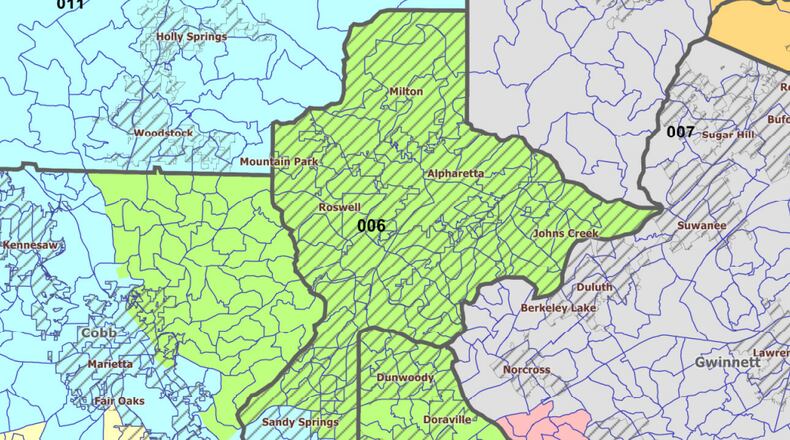The outcome of redistricting later this year will have consequences for years to come, affecting who is elected and perhaps the balance of power between Democrats and Republicans in Congress, the state House and the state Senate.
Starting with the work of Legislature’s Joint Reapportionment Committee, Georgia lawmakers will craft and approve new political maps. Decisions on the boundaries are made by state legislators, even though the districts they are redrawing include their own. It’s a contentious and complicated job. The legislature’s redistricting special session will begin Nov. 3 and last about three weeks.
Each district must have roughly the same number of voters, adjusted to account for the 2020 Census. Georgia’s population grew by 1 million since the 2010 Census, to 10.7 million residents.
The Republican majority in the General Assembly will attempt to approve maps that increase their control of 58% of state legislative districts, and Democrats will try to stop them while also preserving their own seats. Lawsuits challenging the fairness of maps could follow.
When all is done, many voters and even some current elected officials, may end up assigned to new election districts. Candidates will run in those new districts in 2022. House Speaker David Ralston said he expects legislators to redistrict the state in late fall, or, as he phrased it, when “the frost on the pumpkin.”
UPDATE: Governor announces special session in November for Georgia redistricting
On the congressional level, Democrats worry that suburban U.S. House districts represented by U.S. Reps. Carolyn Bourdeaux and Lucy McBath could be combined in a way that results in an additional Republican seat.
RELATED
Georgia Legislature adopts rules for its 2021 redistricting process
Why rural Georgia expects to lose seats in 2021 redistricting
Follow Georgia Legislature updates on redistricting from the AJC Politics team
What is gerrymandering?
It’s a practice of drawing oddly shaped districts that divide communities and reduce competition in elections.
Each district must have about the same number of voters, but the shape of those districts can be adjusted for other reasons, splitting cities and even neighborhoods into different districts to create districts that favor one political party or another. Gerrymandering is common in redistricting as the majority party — which makes most of the decisions — fights to maintain its power.
The distinction between good civic boundaries and gerrymandering can be a matter of opinion. That’s the reason the process is closely watched and often challenged in court.
How large will each Georgia district be?
Here’s a look at how many voters will be included in each Georgia district, based on 2020 Census growth
14 congressional districts: 765,136 residents each
56 state Senate districts: 191,284 residents each
180 state House seats: 59,511 residents each
Georgia population: 10,711,908
Source: House Budget and Research Office
When will the decision be made?
Here’s how the redistricting process will work out this year:
Summer: State lawmakers hold 11 town hall meetings to hear from the public about the once-in-a-decade process of redrawing Georgia’s political boundaries.
By Sept. 30: The U.S. Census Bureau will release detailed data that will be used for redistricting, including population counts by race, voting age and housing occupancy status.
Late fall: The Georgia General Assembly will convene a special session at the state Capitol to create new borders for state House, state Senate and U.S. House districts.
Nov. 8, 2022: Elections for governor, statewide offices, 236 state legislative districts, 14 U.S. House members and the U.S. Senate seat held by Democratic U.S. Sen. Raphael Warnock. Party primaries will be held earlier in the year.
How can I learn more?
The General Assembly’s Joint Reapportionment Committee held 11 meetings across the state during the summer before the work on redistricting begins sometime in the fall. The public hearings will be livestreamed and available afterward on demand at www.legis.ga.gov. The Legislative and Congressional Reapportionment Office also has a web page with links to maps and other resources about the process.
Private organizations, including Fair Count, Fair Districts and Common Cause, are trying to educate the public and encourage participation in community meetings and the work of the Legislature.
The Atlanta Journal-Constitution Politics team will provide coverage of the Reapportionment Committee and an expected special legislative session to approve the new district maps. Our Politics email newsletter and social media accounts on Facebook and Twitter are also good ways to keep up with our coverage.
About the Author
Keep Reading
The Latest
Featured


